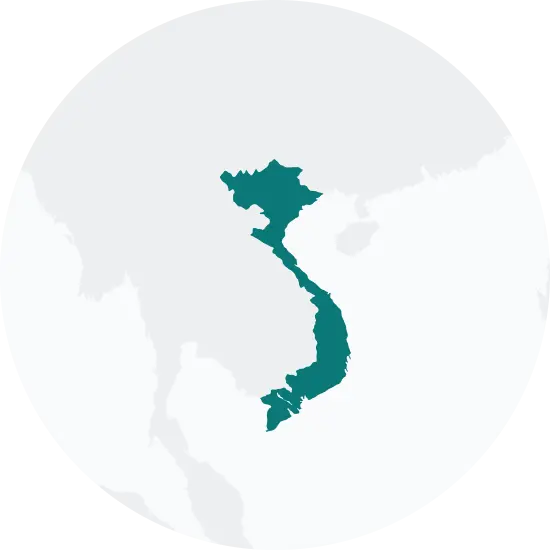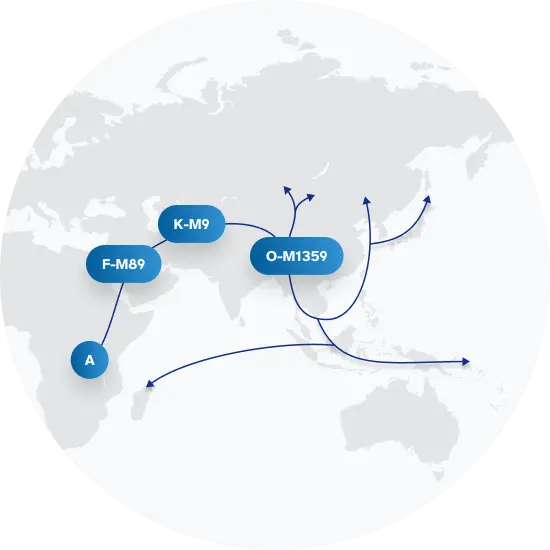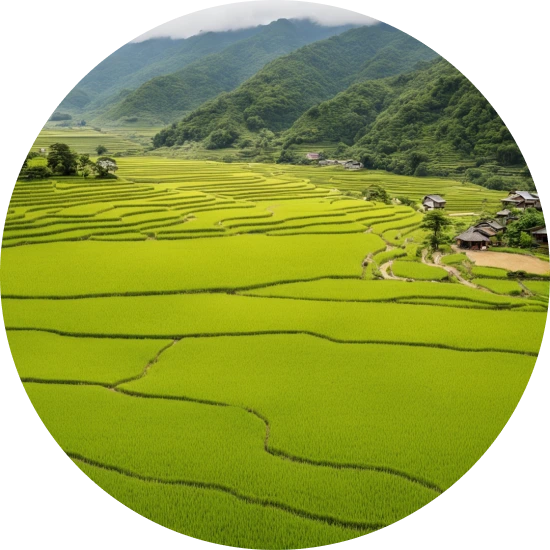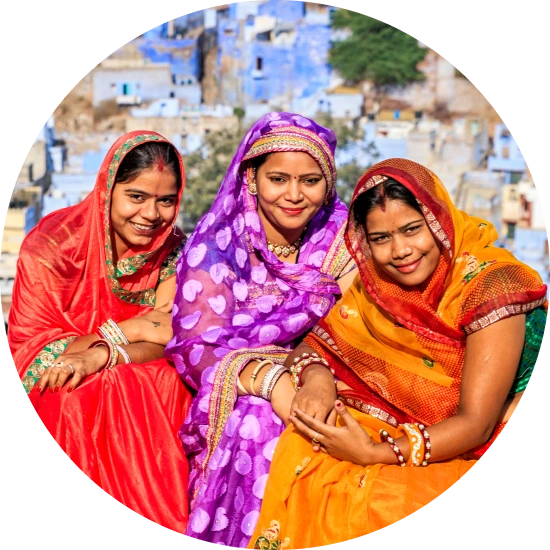Explore the Family Name Thai
How common is the last name Thai in the United States?
Based on the Decennial U.S. Census, the popularity of the surname Thai has seen a significant increase in the United States over the past decade. In 2000, Thai was ranked the 3,864th most popular surname, but by 2010, it had risen to the 3,089th spot, marking a 20.06% change. The count of individuals with this surname also saw an upswing from 8,440 in 2000 to 11,644 in 2010, a notable rise of nearly 38%. The proportion of people named Thai per 100k also increased by 26.2% during this period.
| 2000 | 2010 | Change | |
|---|---|---|---|
| Rank | #3,864 | #3,089 | 20.06% |
| Count | 8,440 | 11,644 | 37.96% |
| Proportion per 100k | 3.13 | 3.95 | 26.2% |
Race and Ethnicity of people with the last name Thai
The data from the Decennial U.S. Census also provides insight into the ethnicity associated with the surname Thai. An overwhelming majority of those with this name identify as Asian or Pacific Islander, making up 94.67% of the total in 2000 and growing slightly to 95.61% in 2010. The percentage of individuals identifying with two or more ethnicities decreased significantly from 2.46% to 1.41%, while the Hispanic community saw a relative growth of 31.82%, albeit from a small base. The proportions of those identifying as White remained steady at 2.23%, while there were no recorded individuals identifying as Black or American Indian and Alaskan Native in 2010, down from minimal percentages in 2000.
| 2000 | 2010 | Change | |
|---|---|---|---|
| Asian/Pacific Islander | 94.67% | 95.61% | 0.99% |
| White | 2.23% | 2.23% | 0% |
| Two or More Races | 2.46% | 1.41% | -42.68% |
| Hispanic | 0.44% | 0.58% | 31.82% |
| Black | 0.14% | 0% | 0% |
| American Indian and Alaskan Native | 0.06% | 0% | 0% |
Thai ancestry composition
23andMe computes an ancestry breakdown for each customer. People may have ancestry from just one population or they may have ancestry from several populations. The most commonly-observed ancestry found in people with the surname Thai is Vietnamese, which comprises 48.1% of all ancestry found in people with the surname. The next two most common ancestries are Chinese (38.9%) and French & German (3.0%). Additional ancestries include British & Irish, Indonesian, Thai, Khmer & Myanma, Chinese Dai, Filipino & Austronesian, and Eastern European.
Ready to learn more about your ancestry? Get the most comprehensive ancestry breakdown on the market by taking our DNA test. Shop 23andMe
| ANCESTRY BREAKDOWN | COMPOSITION |
|---|---|
| Vietnamese | 48.1% |
| Chinese | 38.9% |
| French & German | 3.0% |
| Other | 10.1% |

Possible origins of the surname Thai
Your DNA provides clues about where your recent ancestors may have lived. Having many distant relatives in the same location suggests that you may all share common ancestry there. Locations with many distant relatives can also be places where people have migrated recently, such as large cities. If a large number of individuals who share your surname have distant relatives in a specific area, it could indicate a connection between your surname and that location, stemming from either recent ancestral ties or migration.
Based on 23andMe data, people with last name Thai have recent ancestry locations in Vietnam and China.
| RECENT ANCESTRY Location | Percentage |
|---|---|
| Ho Chi Minh City, Viet Nam | 65.90% |
| Guangdong, China | 63.60% |
| Zhejiang, China | 63.10% |
| Jiangsu, China | 62.60% |
| Shandong, China | 62.60% |
What Thai haplogroups can tell you
Haplogroups are genetic population groups that share a common ancestor on either your paternal or maternal line. These paternal and maternal haplogroups shed light on your genetic ancestry and help tell the story of your family.
The top paternal haplogroup of people with the surname Thai is O-F1759, which is predominantly found among people with East Asian & Indigenous American ancestry. Haplogroup O-F1759 is descended from haplogroup O-M1359. Other common haplogroups include O-F11 and O-F2758, which are predominantly found among people with East Asian & Indigenous American and East Asian & Indigenous American ancestry. Other surnames with similar common haplogroups are: Chua, Chu, Cao, Hsu, He, Ho, Wu, Tran, Chong, Chang.
The most common maternal haplogroups of people with Thai surname are: M, B5a1, M7b. These most commonly trace back to individuals of East Asian & Indigenous American and European ancestry.
 Paternal Haplogroup Origins O-M1359
Paternal Haplogroup Origins O-M1359
Your paternal lineage may be linked to the Yayoi people
Historical Japanese cultures developed from two waves of people migrating from the Asian continent. Hunter-gatherers arrived in Japan more than 12,000 years ago, perhaps during the last Ice Age, when a land bridge connected Japan to the Asian mainland. This influx of people led to a culture called the Jomon. The Jomon were followed by a second migration into Japan nearly 2,300 years ago. This migration, called the Yayoi expansion, brought one lineage of haplogroup O1b to Japan, along with wet rice agriculture, weaving techniques, and metalworking technology. Research suggests that the Yayoi people were descendants of prehistoric farmers that originated in Southeast Asia, and may be associated with the origin of agriculture in the region. The transition of people in Japan from hunter-gatherers to farmers may have been triggered around 400 BC by technological developments introduced by the Yayoi people, including cold-resistant varieties of rice, iron tools, and rice field irrigation.
Your maternal lineage may be linked to the ancient people of the Indian subcontinent
While Haplogroup M is widespread throughout South and East Asia, it is more diverse on the Indian sub-continent than anywhere else in the world. The high degree of diversity of M in India is likely tied to its ancient arrival here nearly 50,000 years ago. In addition to M2, which is found throughout the subcontinent, there are dozens of haplogroups branching off of M that exist in India. These branches are often connected to specific regions, tribes, or ethnic groups. For example, haplogroup M18 is found among the Oraon peoples of eastern India and Bangladesh, while haplogroup M41 is common among the Pardhan speakers of eastern India, and haplogroup M31a can be found on the Andaman Islands, just off the southeast coast of India.

What do people with the surname Thai have in common?
Spoiler alert: it's complicated. People with the same last name are usually no more genetically similar than a randomly sampled group of people from the same population. That said, people with the same surname are more likely to have similar ancestries than randomly sampled individuals. The reason is the tendency of people with similar cultural or geographical backgrounds to preferentially mate with one another. That's why people who share a surname may be more likely to share traits and tendencies in common than people within the general population. Check out the percentages below to see the prevalences of tastes, habits, and traits of people with your surname compared with prevalences among 23andMe users.
Preferences
Traits
Habits
Wellness
Are health conditions linked to the last name Thai?
The short answer is that, if there is an association between surname and health, it's usually more about your ancestry than your name. Individuals with a given surname are no more genetically similar than the general population but often have similar ancestries. The populations of people associated with those shared ancestries often have sets of genetic variations, also known as alleles, in common. Some of those alleles are associated with a greater likelihood of developing certain diseases.
Disease variant frequency by ancestry
Disease allele frequencies in populations associated with the surname Thai are shown below. Important Note: not everyone with a disease allele will develop these health condition















